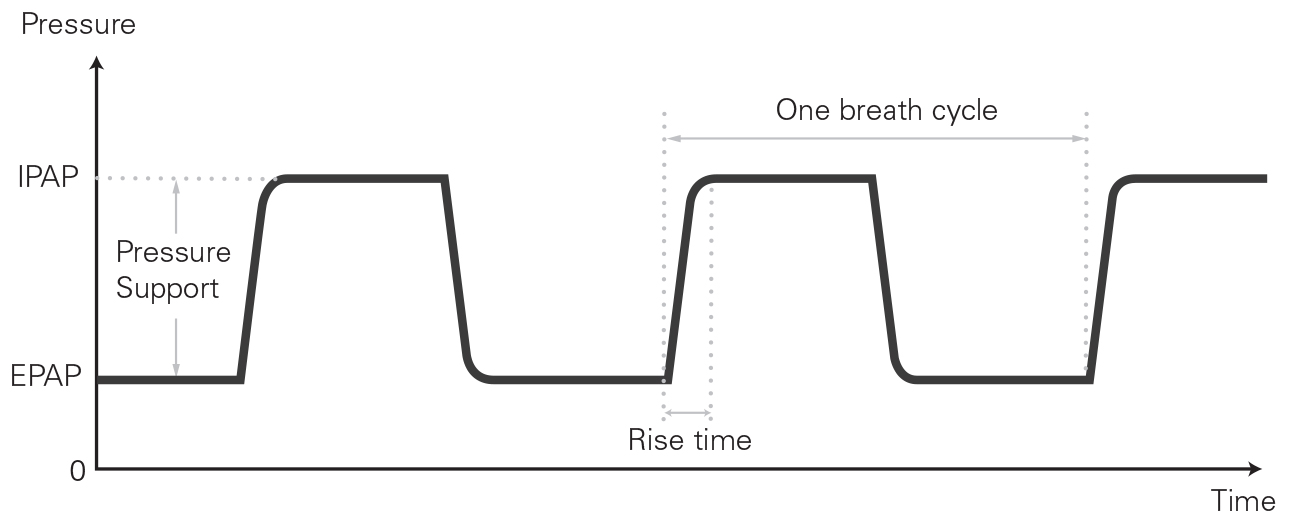Bilevel pressures
Available in: S, ST, T and VAuto modes.
The device assists spontaneous breathing by cycling between two pressures in response to the patient flow or a preset fixed time.
The inspiratory positive airway pressure (IPAP, or the sum of EPAP and the pressure support level) assists inspiration.
The lower expiratory positive airway pressure (EPAP) facilitates exhalation comfort while providing a splint to maintain an open upper airway.
The difference of the two pressures—pressure support (PS) level—contributes to patient comfort.
 |
In VAuto mode, the AutoSet algorithm automatically adjusts pressure in response to flow limitation, snore and obstructive apneas.
Min EPAP, Max IPAP and pressure support in VAuto mode
Pressure support allows you to set the difference between inspiratory and expiratory pressure and is fixed throughout the night. Min EPAP and Max IPAP settings allow you to restrict the delivered pressure ranges in which the AutoSet algorithm can operate.
The EPAP and IPAP will vary across the session according to the patient’s needs. It responds to snoring, apneas and flow limitation of the patient’s flow curve.
Min EPAP and Max IPAP can be adjusted to limit the upper and lower delivered pressure limits.
In S mode, you may set two treatment pressures-–one for inspiration (IPAP) and one for expiration (EPAP). The device senses when the patient is inhaling and exhaling and supplies the pressures accordingly. The difference between IPAP and EPAP levels helps determine the tidal volume.
In ST mode, the device augments any breath initiated by the patient, but will also supply additional breaths should the patient breath rate fall below the set "backup" breath rate.
In T mode, a fixed breath rate and a fixed inspiration/expiration time are supplied regardless of patient effort.